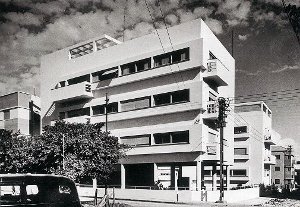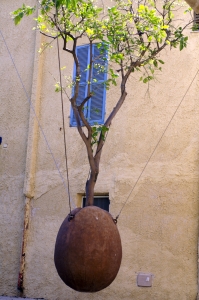Tel Aviv Architecture

Tel Aviv’s architecture cannot compare to the rich historical and architectural heritage of Jerusalem. It is a modern city that was founded only one century ago and as a result, there are no buildings with centuries or even millennia of history. However, Tel Aviv is home to a number of architectural masterpieces and a variety of different styles all of which represent an important part of the city’s history and development over the last century.
The earliest architecture of Tel Aviv mostly consists of the European-inspired single-story buildings. Tel Aviv’s first neighbourhood outside Jaffa - Neve Tzedek, however, mostly consisted of two-storey houses that were built from sandstone. Unfortunately, the village-like neighbourhood later became a victim of the expanding urban centre. As the city began to develop away from Neve Tzedek and the Jaffa core, many buildings in the neighbourhood were abandoned and fell into into neglect. In 1960, the city authorities scheduled the neighbourhood’s neglected buildings to be demolished but the plans were halted in the last minute and many century-old buildings were put on the preservation list. The actual preservation efforts began only in the 1980s. The old buildings became a home to new establishments which made Neve Tzedek one of the most trendy neighbourhoods in Tel Aviv.

In the 1920s, the European-style was joined by the Orientalist features such as arches and ornamental tiles, creating a unique blend of European and Eastern architectural styles. The city itself, however, developed according to the plan that was drawn up by Patrick Geddes (therefore “The Geddes Plan”), a Scottish urban planner who was hired by the British mandate. His plan that was adopted by the city council envisioned the creation of the so-called Garden City. As a result, the streets and neighbourhoods were separated by public parks and boulevards.
In the 1920s and 1930s, the Jewish architects who left Nazi Germany introduced the so-called Bauhaus architecture, giving the rise of the White City. It contains the largest collection of buildings in Bauhaus style, also known as International style that profoundly influenced the Modernist architecture. In 2003, Tel Aviv’s White City was inscribed into the UNESCO World Heritage Site list. Unfortunately, some Bauhaus buildings were demolished before adoption of legislation that foresees preservation of “the outstanding example of new town planing and architecture in the 1920s” as UNESCO called the White City. Out of about 4,000 Bauhaus buildings, 1,500 are still in need of preservation and restoration works.

Like every other world’s metropolis, Tel Aviv is also home to impressive skyscrapers that dominate the cityscape. The city is home to Israel’s first skyscraper – Shalom Meir Tower which was built in 1965 and was the tallest building in Israel until 1999. In the very same year, it was superseded by the Azrieli Centre which consists of one triangular, one circular and one square building. However, it lost the title of Israel’s tallest building within two years when it was superseded by the City Gate Tower in Ramat Gan.